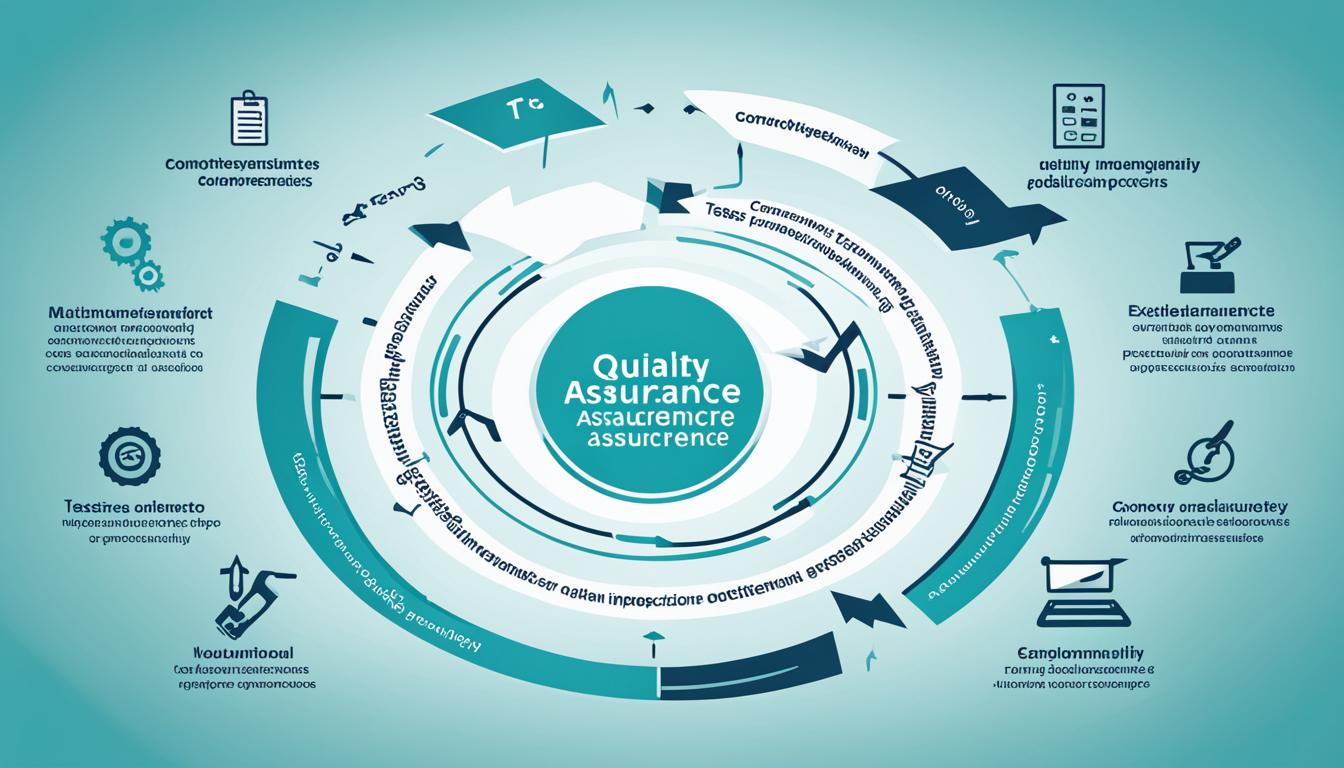Netflix reinvented QA by combining automated testing with real user feedback, ensuring a smooth streaming experience. Automated tests run thousands of checks across devices and conditions, catching bugs early and preventing glitches before they reach viewers. User feedback provides crucial context, helping prioritize fixes and improve reliability. This continuous loop of testing and feedback keeps Netflix ahead of issues and delivers seamless streaming. Keep exploring to discover how this innovative approach keeps your viewing uninterrupted.
Key Takeaways
- Netflix combines automated testing with user feedback to proactively identify and resolve technical issues.
- Extensive automation runs tests across devices, browsers, and networks, catching bugs early before deployment.
- User feedback provides real-world insights, guiding targeted improvements and prioritizing user-impacting fixes.
- The synergy of testing and feedback maintains high-quality streaming despite new features and content updates.
- This dual QA approach creates a resilient system ensuring seamless, glitch-free viewing experiences for users.

Netflix has transformed quality assurance (QA) by implementing innovative practices that streamline testing and improve overall product reliability. You might not realize it, but behind every seamless streaming experience, there’s a sophisticated system of automated testing working tirelessly to catch glitches before they reach you. Netflix leverages automation extensively to run countless tests across different devices, browsers, and network conditions. This automated testing enables quick detection of bugs and performance issues, reducing the time between development and deployment. Instead of waiting for manual testers to find issues, the system automatically runs thousands of tests with each code update, catching problems early and ensuring smoother releases. This approach minimizes the chances of bugs slipping into production, helping you enjoy uninterrupted viewing.
Netflix uses automated testing to catch bugs early and ensure smooth streaming experiences for users.
But automation isn’t the only game-changer here. Netflix actively incorporates user feedback into its QA process. When you report an issue or suggest an improvement, your input goes directly into their development cycle. The company analyzes this feedback to identify recurring problems or pain points that automated tests might miss. By combining automated testing with real user insights, Netflix creates a more thorough testing framework that reflects actual user experiences. This synergy means they can prioritize fixes that matter most to you, making the platform more reliable and user-friendly. You’re part of this process, whether you realize it or not, because your feedback influences how Netflix enhances its service.
This dual approach—automated testing paired with user feedback—gives Netflix a significant advantage. Automated tests quickly identify technical bugs, ensuring that new features or updates don’t introduce unforeseen issues. Meanwhile, user feedback offers context about how those issues impact your experience, allowing the QA team to focus on real-world problems. This continuous loop of testing, feedback, and improvement helps Netflix stay ahead of potential glitches, maintaining high-quality streaming even as they roll out new features and content. You benefit from this meticulous process every time you enjoy a smooth, glitch-free viewing session.
In essence, Netflix’s reinvention of QA isn’t just about catching bugs; it’s about creating a resilient, dynamic system that adapts to user needs and technical challenges. Automated testing accelerates the process, while user feedback ensures it remains relevant and effective. Together, they form a shield against glitches, keeping your streaming experience seamless and enjoyable. So next time your favorite show loads instantly or a film plays without interruptions, remember that behind the scenes, Netflix’s innovative QA practices are hard at work, making sure your entertainment flows smoothly. Integrating multiple testing methods is crucial for maintaining high-quality digital products in today’s competitive landscape.
Frequently Asked Questions
How Does Netflix’s QA Process Differ From Traditional Methods?
You notice that Netflix’s QA process differs from traditional methods because it emphasizes continuous testing automation and real-time monitoring. Instead of manual checks, you rely on automated tools to guarantee high content quality and seamless streaming. This approach enables you to quickly identify and fix issues, reducing glitches and improving user experience. By integrating automation into every stage, Netflix keeps its platform reliable and efficient, setting it apart from conventional QA practices.
What Tools Does Netflix Use for Automated Testing?
Imagine a sleek control room with real-time dashboards and flashing alerts—this is Netflix’s automated testing environment. You leverage tools like Selenium, Jenkins, and Cypress to run continuous integration seamlessly, catching glitches before they reach viewers. Automated testing acts like a vigilant guard, constantly scanning code changes, ensuring smooth streaming. With these tools, your team maintains high quality, delivering glitch-free content, just like Netflix’s flawless streaming experience.
How Does Netflix Handle QA for Global Content Delivery?
You’ll find that Netflix handles QA for global content delivery by focusing on content localization and bandwidth optimization. They confirm that localized content streams smoothly across regions, adapting to local languages and cultural preferences. Simultaneously, they optimize bandwidth usage to prevent buffering and glitches. This approach guarantees a seamless viewing experience worldwide, with rigorous testing and real-time monitoring to quickly address any delivery issues, keeping your streaming smooth and reliable.
What Role Does User Feedback Play in Netflix’S QA?
Imagine user feedback as a lighthouse guiding your QA efforts. It’s essential in Netflix’s process, helping you understand real user engagement and identify issues quickly. You actively analyze feedback to refine features, ensuring smoother streaming experiences. This continuous loop of listening and iterating allows you to adapt swiftly, making your QA more effective. Ultimately, user feedback becomes a powerful tool to enhance quality and keep viewers happily streaming without glitches.
How Often Does Netflix Update Its QA Protocols?
You should know that Netflix updates its QA protocols regularly to keep up with changing technology and viewer needs. They incorporate content localization and viewership analytics into their processes, ensuring quality remains high across diverse regions and devices. These updates happen frequently, often in response to new content, user feedback, or emerging technical challenges, so you can expect Netflix’s QA practices to evolve continuously, maintaining seamless streaming experiences for all users.
Conclusion
By embracing innovative QA methods, you’ve seen how Netflix turned streaming glitches into history—like the magic of a well-placed dial-up modem in a world now dominated by fiber optics. Your role in this revolution proves that continuous improvement and bold thinking can transform technology. So, next time you binge your favorite show without a hitch, remember—you’re experiencing the future of streaming, shaped by the pioneering spirit that once thought a VHS tape was king.
Randy serves as our Software Quality Assurance Expert, bringing to the table a rich tapestry of industry experiences gathered over 15 years with various renowned tech companies. His deep understanding of the intricate aspects and the evolving challenges in SQA is unparalleled. At EarnQA, Randy’s contributions extend well beyond developing courses; he is a mentor to students and a leader of webinars, sharing valuable insights and hands-on experiences that greatly enhance our educational programs.










